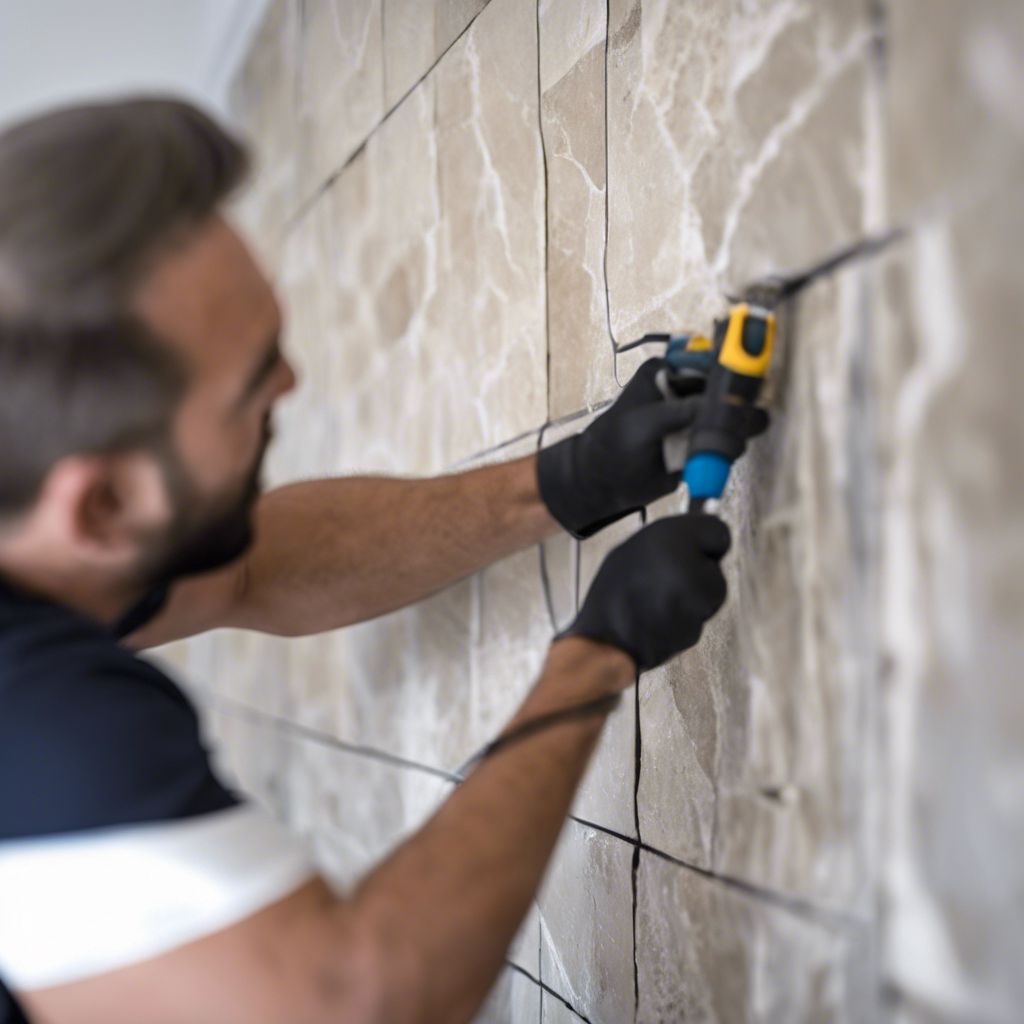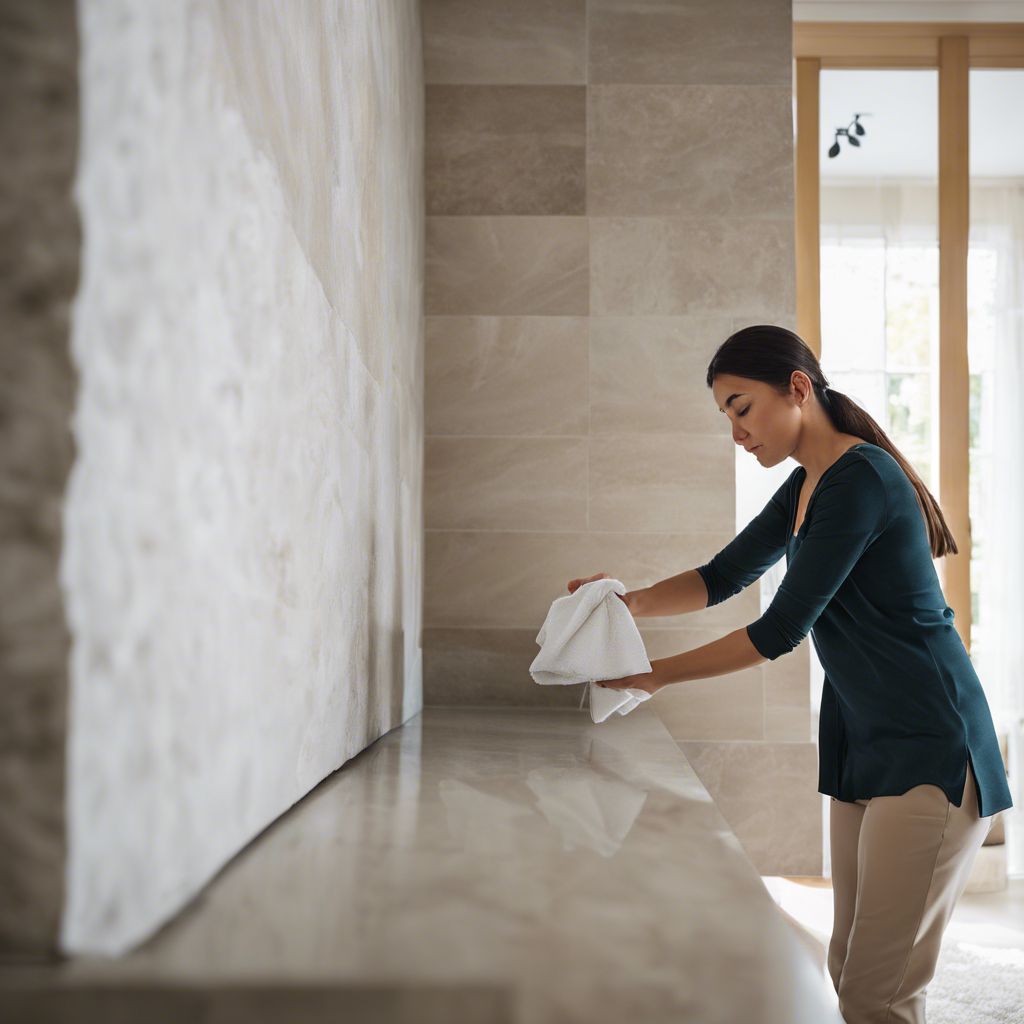
Key Takeaways
- Limestone walls add timeless elegance to any home and can be refinished to restore their natural beauty.
- Gathering the right materials and tools is important for a successful refinishing project.
- Proper preparation of the workspace and safety gear is essential before starting the refinishing process.
- A detailed, step-by-step guide helps you refinish your limestone walls with confidence.
- Regular maintenance after refinishing will keep your limestone walls looking great for years to come.
Revitalize Your Space: Limestone Wall Refinishing
Limestone walls have a way of making a statement in any room, but over time, they can lose their luster. Whether it’s due to wear and tear, staining, or just the passage of time, there comes a moment when your limestone walls need a refresh. That’s where DIY refinishing comes in. It’s a rewarding project that not only brings back the natural beauty of limestone but also protects it for the future. Let’s dive into the steps and tips that will make your limestone walls the centerpiece of your home once again.
Why Refinish Limestone Walls?
Limestone is a durable stone, but it’s also porous, which means it can absorb dirt, grime, and spills, leading to staining and etching. Refinishing your limestone walls can prevent these issues and bring back the stone’s original sheen. A well-maintained limestone wall can add value to your home, not to mention the satisfaction you’ll get from accomplishing this project yourself.
Materials and Tools Checklist
Before you start, make sure you have all the materials and tools you’ll need. Here’s a list to get you going:
- Protective gear (gloves, goggles, dust mask)
- Stone cleaner specifically designed for limestone
- Bucket and sponge
- Plastic sheeting and painter’s tape
- Stone repair kit for filling cracks and chips
- Hand sander or sanding block
- Diamond sanding pads (various grits)
- Limestone polishing powder
- Sealant specifically made for limestone
- Soft cloths and brushes
Preparing the Workspace
Getting your workspace ready is just as important as the refinishing process itself. First, clear the area of any furniture or decor to give yourself plenty of room to move around. Next, protect the surrounding areas with plastic sheeting and use painter’s tape to secure the edges. This will help contain any mess and make cleanup easier. Most importantly, ensure the room is well-ventilated to avoid inhaling any dust or fumes.

Step-by-Step Guide to Refinishing Limestone Tile Walls
Now that you’re all set with your materials and workspace, let’s walk through the refinishing process. By following these steps, you’ll be on your way to walls that look as good as new—or even better.
Step 1: Suit Up for Safety
Before anything else, safety comes first. Wear your gloves, goggles, and dust mask to protect yourself from any debris and chemicals. It’s easy to overlook this step in the excitement to get started, but trust me, your safety is paramount.
Step 2: Preparing Your Wall
Start with a clean surface by using a limestone-friendly cleaner. Apply the cleaner with a sponge, working in sections, and rinse thoroughly with clean water. Let the wall dry completely before moving on to repairs. A clean wall ensures that any repairs or sealants will adhere properly, giving you the best results.
Remember, the key here is to use a gentle cleaner. Harsh chemicals can damage limestone, so stick to a pH-neutral solution designed for natural stone. This way, you’re cleaning without compromising the integrity of the limestone.
Step 3: Crack and Chip Repair
Next, inspect your wall for any cracks or chips. These can be filled with a limestone repair kit. Simply mix the filler according to the instructions, apply it to the damaged areas, and smooth it out. Allow it to dry as directed before sanding it down to be flush with the wall surface.
Don’t rush this step. Taking the time to repair any damage not only improves the appearance of your wall but also prevents further deterioration. A wall in good repair is a wall that will stand the test of time.
Step 4: The Sanding Chronicles
Once repairs are dry, it’s time to sand the wall. Sanding smooths out the filler and evens out any rough spots on the limestone. Start with a lower grit sandpaper and work your way up to a finer grit. This gradual process helps to avoid scratches and ensures a smooth finish. Remember to wipe down the wall with a damp cloth between sanding to remove any dust.
Pro tip: sand in a circular motion to avoid creating patterns on the stone.
Your goal is to achieve a uniform surface that feels smooth to the touch. With patience and careful sanding, you’ll set the stage for a stunningly polished finish.
Step 5: The Honing Method (Optional)
If you prefer a more satin or matte finish, you can opt for honing your limestone. This involves using a honing powder and a slightly wet method to create a soft, smooth surface. Honing diminishes the sheen but enhances the stone’s natural colors and features. It’s a personal choice, so consider the look you’re aiming for in your space.
Step 6: Shine On – Polishing Your Limestone (Optional)
For those who love a glossy look, polishing is the way to go. After sanding, apply a limestone polishing powder to the wall according to the product’s instructions. Use a soft cloth or a buffing pad to work the powder into the stone in a circular motion. This process can be quite a workout, but the gleaming results are worth every bit of effort.
Polishing not only brings out the shine but also adds a layer of protection. Your walls will now be more resistant to staining and etching, making them easier to maintain over time. When you’re finished, stand back and admire the radiance—you’ve earned it!
Step 7: The Final Coat – Sealing
The final step in your refinishing journey is sealing the limestone. Choose a sealant that’s specifically designed for limestone to ensure compatibility. A high-quality sealant will protect your walls from moisture and stains without altering the stone’s natural appearance.
Make sure the area is well-ventilated to avoid inhaling fumes. Apply the sealant evenly with a soft cloth, following the manufacturer’s directions. Allow it to penetrate the stone, then wipe away any excess. Give the sealant ample time to cure for maximum protection, so check the product label for the recommended drying time.
Sealing is not just a protective measure; it’s the final touch that locks in all your hard work. It’s like putting a shield over your limestone that says, “I’m ready for anything you throw at me.”
Creative Touches for Personal Flair
With your limestone walls now beautifully refinished, it’s time to add some personal touches. Think of your wall as a canvas—how will you make it uniquely yours? Here are some ideas:
Color Choices: Enhancing Natural Tones
Limestone comes in a variety of natural hues, from creamy whites to deep tans. You can enhance these tones with carefully chosen lighting. Soft, warm lights can bring out the warmth of the stone, while cooler lights can highlight the stone’s subtle colors. Experiment with different lighting options to see what flatters your walls the most.
Finishes: Matte vs. Glossy
As mentioned earlier, the finish you choose—matte or glossy—can dramatically change the look of your walls. Matte finishes give a more understated, natural vibe, while glossy finishes offer a sleek, sophisticated sheen. Consider the ambiance you want to create in your room and choose accordingly.

Maintenance Matters: Post-Refinishing Care
Now that you’ve put in the work to refinish your limestone walls, keeping them in pristine condition is key. Here’s how:
Routine Cleaning Do’s and Don’ts
For daily cleaning, use a soft cloth and a gentle, pH-neutral cleaner. Avoid acidic or abrasive cleaners, as they can damage the limestone. If you’re unsure about a product, test it on a small, inconspicuous area first.
- Do use a soft cloth or sponge for cleaning.
- Don’t use vinegar, lemon juice, or other acidic solutions.
- Do clean up spills immediately to prevent staining.
- Don’t use abrasive scrubbers that can scratch the surface.
Regular cleaning is not just about aesthetics; it’s about preserving the longevity of your limestone walls. Gentle care is the secret to walls that wow for years to come.
Dealing with Future Stains and Spills
Accidents happen, but they don’t have to spell disaster for your limestone walls. If you spill something, blot it up promptly with a clean cloth. For tough stains, use a poultice—a paste made from a stain-removing chemical and a material like talc or diatomaceous earth. Apply the poultice to the stain, cover it with plastic, and let it sit until it dries. This draws out the stain from the stone.
With these steps, tips, and regular care, your limestone walls will remain a source of pride in your home. You’ve taken something old and made it new again, adding both beauty and value to your space. So go ahead, bask in the glory of your DIY success—you’ve earned it!
Transforming Challenges into Opportunities
When you tackle a refinishing project, you’re bound to encounter a few bumps along the way. But don’t let that discourage you. Every challenge is an opportunity to learn and improve. Maybe you’ll discover a stubborn stain that won’t budge, or perhaps the sealant isn’t setting as it should. These moments test your problem-solving skills and often lead to even better results. Embrace the challenges, and you’ll come out the other side with not only a beautiful limestone wall but also a wealth of new DIY skills.
Troubleshooting Common Refinishing Hurdles
Sometimes, despite your best efforts, things don’t go according to plan. Here are a couple of common issues you might face and how to handle them:
If you find that the sealant isn’t adhering properly, it could be because the limestone wasn’t completely dry before application. Make sure to allow ample drying time after cleaning and before sealing.
For those pesky stains that seem immune to all your efforts, try a different poultice recipe or consult a professional for advice. They might recommend a specific product or technique that’s perfect for the type of stain you’re dealing with.
When to Call in a Professional
DIY projects can be immensely satisfying, but it’s important to know when to call in the pros. If you encounter extensive damage, such as deep cracks or structural issues, it’s time to seek professional help. Likewise, if you’ve tried all the tricks in your DIY book and still can’t get the finish you desire, a professional’s expertise can save you time and ensure your limestone is in the best hands.

Frequently Asked Questions (FAQ)
How Often Should Limestone Walls Be Refinished?
Limestone walls should be refinished every few years, depending on the level of wear and tear they’ve endured. If your walls are in a high-traffic area or exposed to more spills and stains, you might need to refinish more frequently. Keep an eye on the condition of your walls, and when they start to look dull or worn, it’s time for a refresh.
Can Refinishing Limestone Walls Increase Home Value?
Absolutely. Refinished limestone walls can significantly enhance the aesthetic appeal of your home, making it more attractive to potential buyers. A well-maintained and beautifully finished limestone wall is a feature that can set your home apart from others on the market.
Is It Possible to Achieve Professional Results with DIY Refinishing?
Yes, with the right approach and attention to detail, you can achieve results that rival professional work. The key is to follow the steps carefully, use the right products, and not rush the process. Take your time, and don’t hesitate to do a little extra research if you’re unsure about a particular step.
What Are the Best Products for Limestone Maintenance?
The best products for limestone maintenance are those designed specifically for natural stone. Look for pH-neutral cleaners, repair kits meant for limestone, and sealants that offer protection without altering the stone’s appearance. Always read product reviews and follow the manufacturer’s instructions for the best results.
How Do I Protect Refinished Limestone from Wear and Tear?
To protect your refinished limestone from wear and tear, follow these tips:
- Use a limestone-specific sealer to protect against stains and moisture.
- Use a gentle stone cleaner and a soft cloth to clean up dirt and spills. Avoid harsh chemicals or scrubbing too hard to prevent scratches.
- Clean up spills quickly to avoid staining. A quick blot with a dry cloth followed by a gentle clean with stone cleaner should do the trick.
- Every now and then, give your limestone a once-over to spot any wear and tear.
With these simple steps, your limestone will stay looking fresh and fabulous for years to come!





Leave a Reply